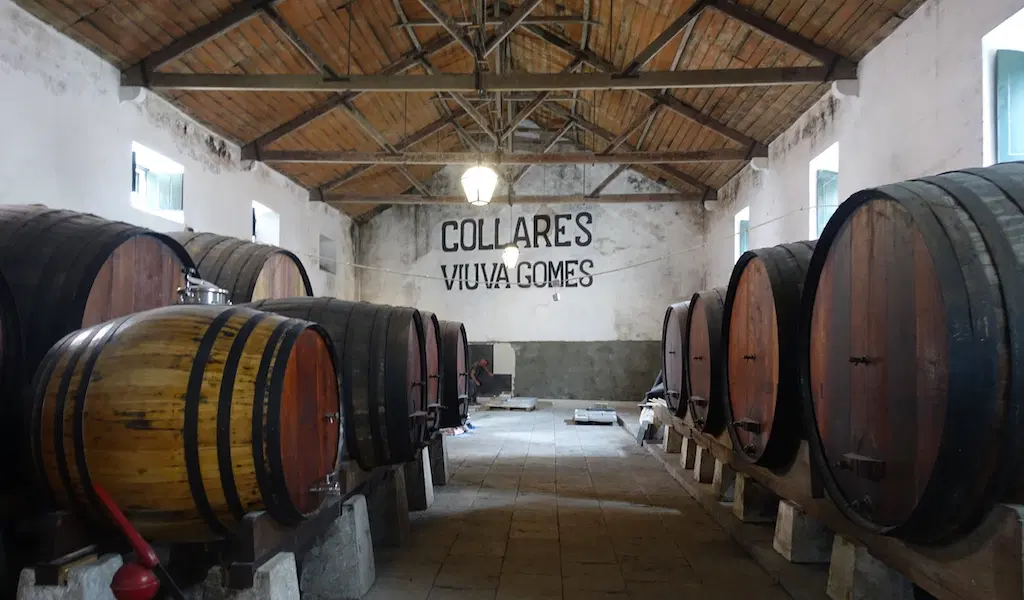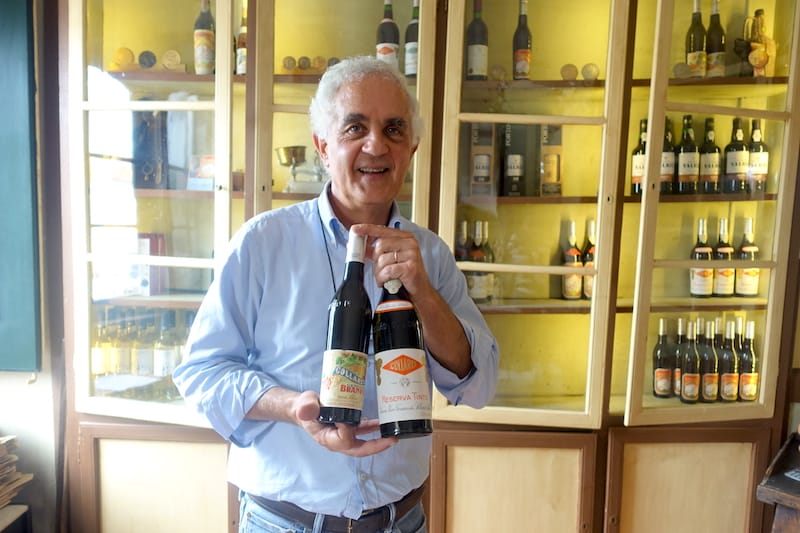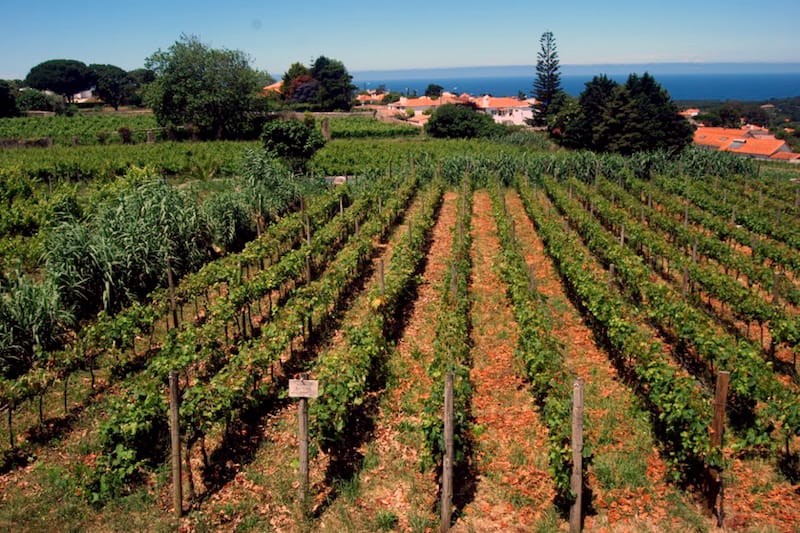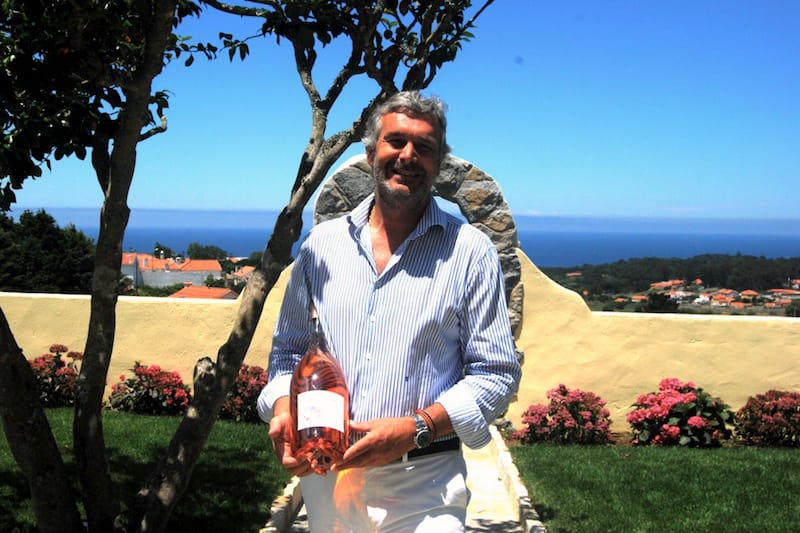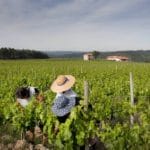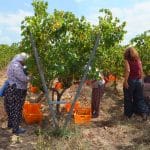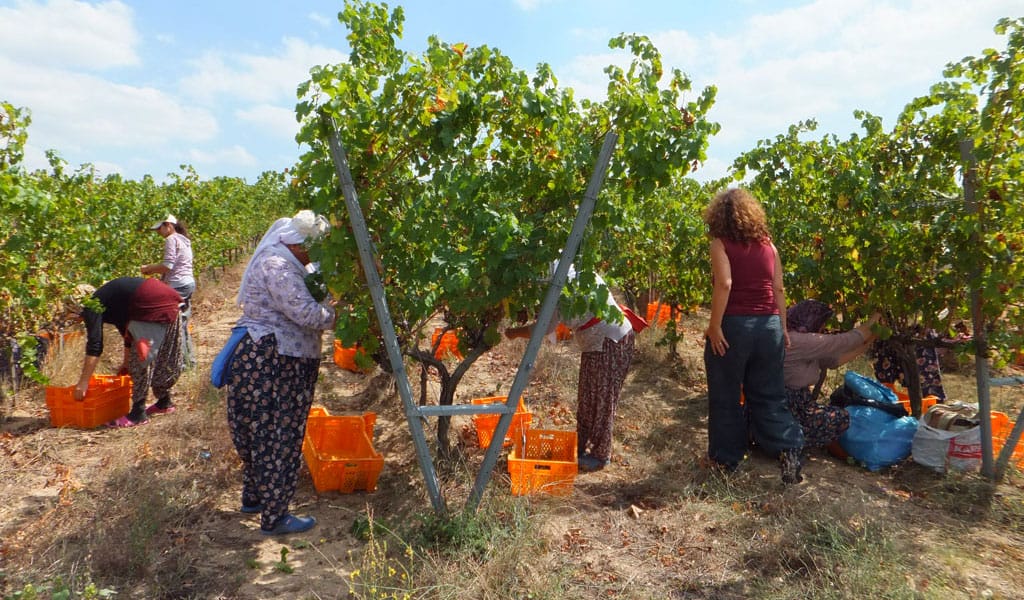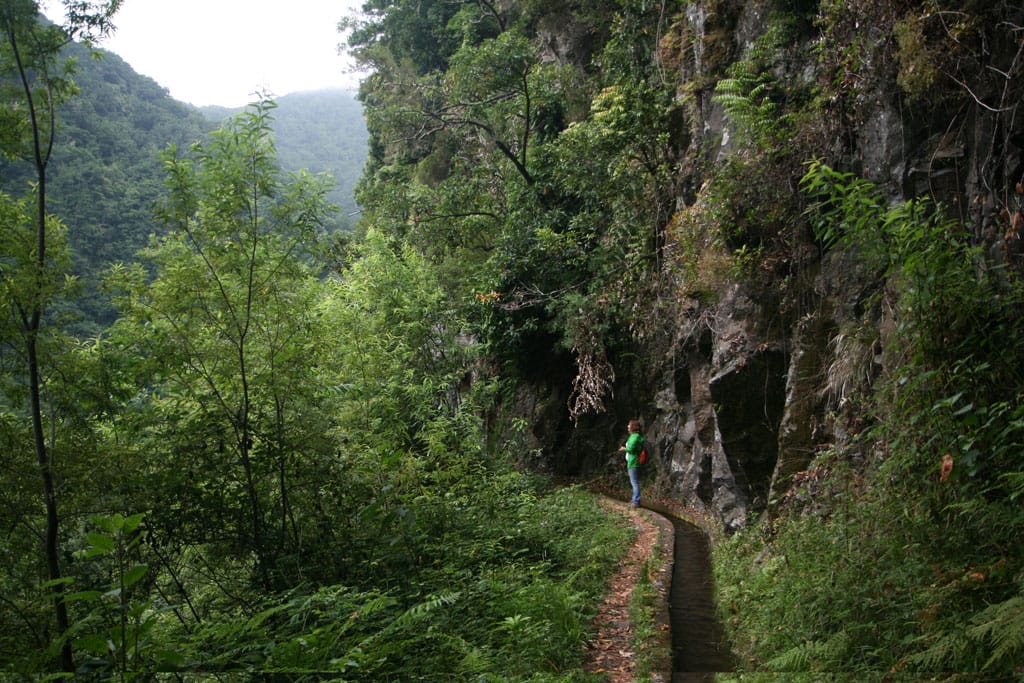They withstood the phylloxera and the strong Atlantic winds, and are slowly fighting back against urban expansion, so it’s no surprise that a glass of wine made from grapes grown in Colares tastes like no other.
The smallest wine region in Portugal, Colares is also probably one of its most distinct. Located on the coastline of Sintra between the hills and the Atlantic, the region owes its fame to the amazing wines produced in the sandy soil so close to the ocean.
It’s also the western-most wine region in continental Europe and has fought like no other the vile phylloxera, the plague that wiped out most European vineyards in the late 19th century.
While almost all of the vines in Portugal were dying, a small region was resisting these pests, as if made invincible by some secret potion. Thanks to the sandy soil and the vines’ deeper roots (which can sometimes extend as far as eight meters deep), the insects couldn’t feed on the roots of the malvasia and ramisco grape plants that grow here.
On a drive out from Lisbon to visit this special region, vineyards begin to pop up around a residential area, after Azenhas do Mar. They look like no other we’ve ever seen before – the vines, shielded by cane fences, grow even closer to the ground than those on the volcanic island of Pico in the Azores, which is also subject to the strong and salty Atlantic winds.
And forget about the neat and tidy rows of Napa, here we see an old mattress set up on its side, perhaps as wind barrier, alongside the nests of vines sprawling across the sandy bed commingling with Colares apple trees and all sorts of other vegetation. If there’s an order to this chaos, it’s not immediately apparent.
The area is by no means large. While the Colares vineyards can survive wind, sandy soil and the phylloxera, they have found a formidable foe in property development. A construction boom in the 80s and 90s encroached on these vineyards – at one point, there were only about eight hectares left. Nowadays the area has rebounded slightly, growing to 12-15 hectares, although still far from the 140 hectares of 50 years ago, or the 2,000 hectares of the early 20th century, when the Colares wine region was created by royal decree (although there is evidence suggesting that the Romans had winemaking facilities here).
The weather is different here too, and the micro-climate brings wind, fog and cooler temperatures. “The harvest starts later than most wine regions in the country, usually in October,” explains José Baeta, while guiding us through his dim-lighted cellar Adega Viúva Gomes, in Almoçageme, where valuable old bottles from the 1930s to the 1960s are stored in the dark behind bars.
Viúva Gomes has a long history in the region. Founded in 1808 by José Gomes da Silva, it’s been in the family of José Baeta since 1988. The name Viúva Gomes comes from the widow of the founder (“viúva” means “widow” in Portuguese), under whose tenure the company grew significantly. Later, it was one of the main suppliers of wine to the French front during the First World War.
“The cool nights and the foggy mornings with the Atlantic winds produce wines that are fresh, mineral and elegant.”
In 1928, the winery was acquired by José Maria da Fonseca, one of the biggest wineries in the country at that time. But JMF’s finances were negatively affected by the debts of large international clients (due to the 1929 crash), so the company was forced to sell Viúva Gomes to Victor Guedes, founder of the iconic Portuguese Gallo olive oil brand.
“Before my father bought this, my family was not making any wine. But now I work here and so does my son,” says José Baeta, whose son Diogo is the winemaker at Viúva Gomes.
To preserve the quality of the wine, growers in Colares for decades had to sell their grapes to the cooperative Adega Regional de Colares, created by the government in 1931. At the time hardly any wine was being produced in Portugal, on account of the phylloxera pest. The cooperative was introduced to ensure that Colares wines continued to be of the highest quality, undiluted by mixtures or fraudulent blends.
As Europe grafted vines from America (which were immune to the phylloxera), forever changing the wines, producers in Colares kept on as they always had, with standards controlled by the Adega.
Although it’s no longer the law, Baeta, like most of the other winemakers in the region, still buys grapes from the cooperative and then ages his wines in big oak casks. The reds, made from the iconic ramisco grape, need to age before they can be drunk.
A bottle from 1969, which costs around 60 euros, has gone to a tawny color similar to vermouth. Moreover, the complexity has grown and the tannins are intense, with low alcohol, a feature of this wine region. A bottle from 1934 is merely 125 euros, a small price for this special and unique wine that has aged so elegantly for decades.
Viúva Gomes produces 3,000 bottles of red and 1,500 half-liter bottles of a refreshing salty white made from the malvasia grape. Like with all precious things, the wines from this cellar come in small quantities. Additionally, they still use the beautifully designed labels from the 1920s, which are being manually applied by a single worker on our visit to the cellar.
To be considered Colares DOC, the grapes have to grow in the region’s sandy soil. Grapes from the same area but grown in clay soil are called Vinho Regional de Lisboa. Regardless of the different soil, they are excellent in their own right, benefiting from the same microclimate.
This is the type of wine produced by Casal de Santa Maria, a winery not far from Viúva Gomes with a very romantic story behind it.
The tale here begins in the 1960s, when Baron Bodo von Bruemmer, originally from the Baltics but living in Switzerland, decided to retire in Portugal and fell in love with this beautiful farm in Almoçageme, close to Cabo da Roca (the western-most point in continental Europe). The house and outer buildings were practically in ruins, yet he renovated with the utmost care. The gardens also needed quite a lot of work, so much in fact that he only uncovered a lovely blue and white tiled fountain, hidden for years by overgrown bushes, in 2006. Like the main house, it was built in 1720 and had survived the earthquake of 1755.
Wine was being made at the property in the 19th century, but production eventually petered out due to the lack of customers. The baron didn’t begin making wine immediately – he was preoccupied with farming and his successful horse-breeding business.
Yet after his wife, Rosário, died in 1994 and after a serious operation in 2006, he decided to start producing wine at Casal. Despite being 96 years old, Bodo was undeterred – as he saw it, there’s not such thing as too late or too old.
Ten years later, in 2016, Bodo von Bruemmer accomplished his dream (with the help of his grandson Nicholas): the vineyards were back at the farm and successfully producing wine. When the baron died that same year, Nicholas moved with his family to Casal de Santa Maria, keeping the heritage alive.
These grapes are grown in clay, not sandy soil, but still produce surprisingly salty whites under the name Casal de Santa Maria, or refreshing reds such as Senhor da Adraga. And they’re about to launch a new rosé.
“I love rosés and always thought we needed a rosé like the French do. I tasted a lot of good ones from Douro and other regions, and some not so good but there was nothing like I wanted. Now, after two years of work I’m happy to introduce my first [rosé] wine,” says Nicholas. “It has this wonderful taste you want on a rosé, the freshness from sea, a bit of salt and that’s where we can beat the French.” The blend contains three grapes: Touriga Nacional, Pinot Noir and Syrah.
Casal has 10 hectares of vineyards within the farm and 3.5 hectares outside. Growing grapes such as pinot noir, merlot, sauvignon blanc, riesling, chardonnay, the favorites of Baron Bodo, but also the indigenous arinto, malvasia and touriga nacional gives the small winery reasons to be cheerful. “I love wine in general but I’m a better drinker than producer,” notes Nicholas.
In 1995, his grandfather planted 5,000 roses next to the vineyards in a tribute to his wife, Rosário. That explains Casal’s dreamlike landscape where roses bloom amongst the grapes against the backdrop of the blue ocean.
António Figueiredo, the main winemaker, tells us how the grapes are all handpicked so that they’re not harmed. He’s happy with the rosé results and expects Nicholas to present some new ones in the near future. “The cool nights and the foggy mornings with the Atlantic winds produce wines that are fresh, minerally and elegant, with the salty notes that are the feature of the region,” says António, who works closely with Jorge Rosa Santos, another winemaker.
Now the love story of Casal continues with Nicholas and his wife, Miryam, who have moved their family and their entire life to Almoçageme. And this brings us to the name of the rosé, Mar de Rosas (Sea of Roses) with a limited edition run of 2,000 bottles.
Looking over the ocean from the tasting room where visitors are welcomed, sipping the Sea of Roses makes one feel very privileged for the wines being brought back to this part of Colares – and thankful for the region’s invincible vines.
You can visit both wineries, but bookings must be made in advancePublished on September 14, 2018







































